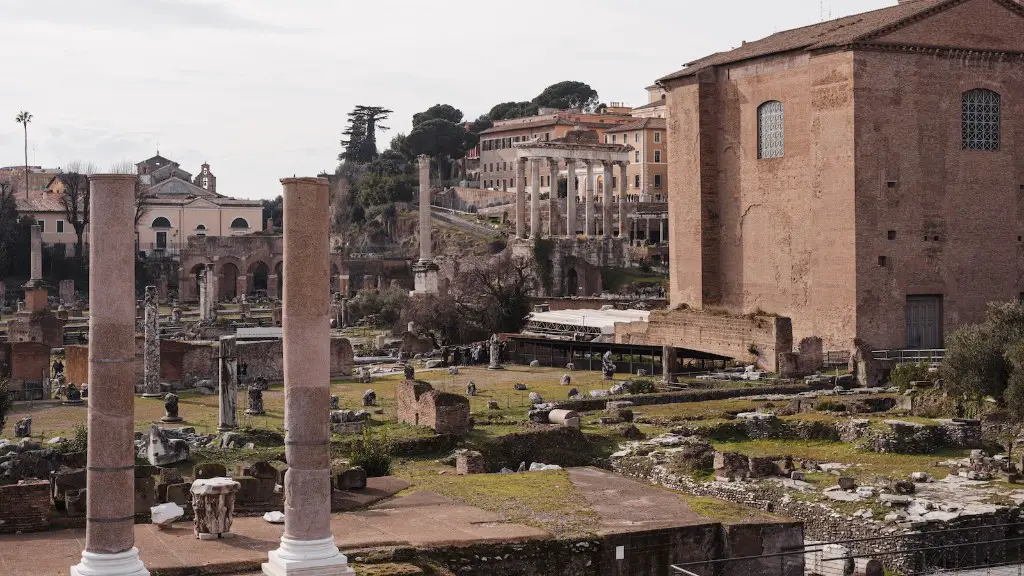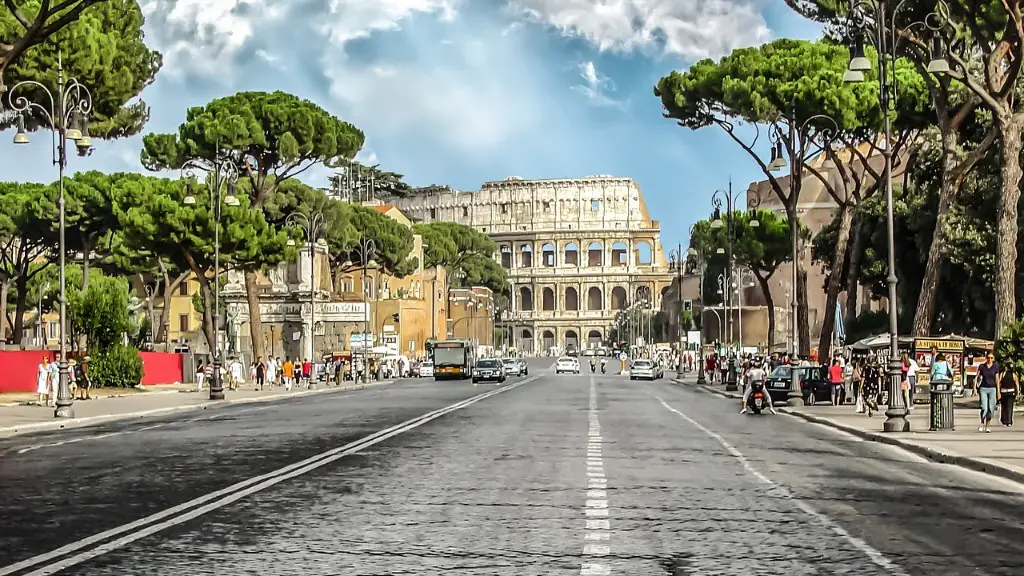The ancient Roman belief was that gladiator blood had the power to heal the sick and give strength to the weak. This was due to the fact that these fighters were often in excellent physical condition and their blood was thought to be full of nutrients and minerals. In addition, the Romans believed that the gods had blessed the gladiators and that their blood held special powers.
It was believed that the blood of gladiators had magical properties and that it could be used to bring good luck or to ward off evil.
Did Romans drink gladiators blood?
Pliny the Elder was a great historian of the Roman Empire who described the mad rush of spectators into arenas to drink the blood of fallen gladiators. Centuries later, Marsilio Ficino similarly promoted drinking young blood as a means for the elderly to regain their youthful vigor.
The Roman writers Tertullian and Festus believed that the contests held in the Roman Colosseum acted as a crude substitute for human sacrifice. This is because the Romans believed that human blood helped purify the deceased person’s soul. Therefore, by holding these contests, the Romans were able to offer up human blood in order to purify the souls of the deceased.
What was the significance of the blood sports and gladiators
The gladiatorial games were a Roman blood sport held in an arena and offered as a public spectacle. Gladiators who were trained professionals would fight one another in the arena to the death! The games began as a funeral ritual to send departing souls off with armed combatants.
Roman gladiator games were a way for the ruling class to show off their wealth and power to the people. They were also used to commemorate military victories, mark important visits from officials, celebrate birthdays, and distract the people from the problems of the day.
What were ancient beliefs about blood?
The ancient peoples were aware of the importance of blood, but they did not know the biology behind it. They were fascinated by the mystery of blood and its ability to both give and take away life. For them, blood was something hidden—only visible when it was flowing from a wound or during childbirth, miscarriage, and menstruation. As such, it became a symbol of both life and death.
Cannabis and opium were used as medication in ancient Rome for a variety of purposes, such as treating insomnia or earaches. Roman doctors noticed the addictiveness of these drugs and wrote that cannabis induced “a warm feeling” while opium was dangerous when diluted.
Why did Romans love gladiators?
Industrialization and modernization have changed the face of warfare, but the_gladiator_lifestyle, in all its brutal glory, still captures the public imagination. In the popular imagination, gladiators are brave warriors, fighting for their lives in the arena. But the reality is often quite different.
Some gladiators were citizens down on their luck (or heavily in debt) while others, like the emperor Commodus, simply did it for ‘fun’. Whatever their reasons for ending up in the arena, gladiators were adored by the Roman public for their bravery and spirit.
Today, the_gladiator_lifestyle is a thing of the past. But the legend of the brave gladiator lives on.
Most gladiators in the Roman Empire were slaves, ex-slaves, or freeborn individuals who fought under contract to a manager. They were often ranked below prostitutes, actors, and pimps in terms of social status, and were generally regarded as both moral and social outcasts. Despite this, gladiators were the sex symbols of their day.
Were gladiators respected in Rome
Although they were not regarded as highly as professional soldiers, gladiators were respected in Roman society. They were often slaves or prisoners who were bought by a manager. He sent them to special gladiator schools where they were trained to fight in a professional way, much like today’s athletes.
Violence has always been a part of public life in Rome. From the very beginning, Roman communities used public demonstrations of violence as a source of entertainment. These publicized displays of brutality, violence, and death served to reinforce social order, demonstrate power, consecrate communal pride, unity, and belonging, and act as a form of education.
Today, we may find such displays of violence barbaric and unnecessary, but it is important to remember that they served a purpose in Roman society. By understanding the role that violence played in public life, we can better appreciate the society that produced it.
Why didn’t gladiators always fight to the death?
While gladiators were typically thought of as men who fought to the death in the arena for the entertainment of the Roman people, this was not always the case. Many gladiators were actually skilled fighters who could survive multiple fights. This provided ongoing entertainment for the Romans while also bringing in some money to pay back the investment made in the gladiators. While many of them would eventually die in the arena, it was not always their intention to simply provide a bloody spectacle for the crowd.
If you’re looking for a movie with lots of bloody violence, this one is definitely worth checking out. There are plenty of brief shots of bloody battles, and some longer ones as well. Men are killed in all sorts of ways, with blows and dull objects, and often brutally stabbed with swords, knives, and spears.
What was the average weight of a Roman gladiator
Big men for the time, 5-foot-7 and 5-foot-8, two inches bigger than average. They were heavy guys, about 170, 175 pounds, which was big for them, and very muscular.
The sport of gladiators was appallingly brutal, and many gladiators who faced the arena did so with fear and trembling. This was especially true for those gladiators who were assigned to fight against wild animals. On one occasion, 20 gladiators committed group suicide rather than enter the arena.
Were Roman gladiators healthy?
It has been suggested that gladiators carbo-loaded before their fights. This means that they ate a diet high in carbohydrates, such as barley and beans, and low in animal proteins. Their meals looked nothing like the paleo or meat-and-fish centric diets now associated with elite warriors and athletes.
The issue of blood transfusions and medical care against religious beliefs is a controversial one. Jehovah’s Witnesses and Christian Scientists both oppose transfusions, and courts have struggled to balance the rights of parents and children in these cases. Minority faiths are not required to provide medical treatment to children, but the issue remains a contentious one.
What religions dont want blood
Jehovah’s Witnesses believe that a human must not sustain his life with another creature’s blood, and they recognize no distinction “between taking blood into the mouth and taking it into the blood vessels.” They believe that Jehovah will turn his back on anyone who receives blood.
Jehovah’s Witness is a small group of people who do not accept blood transfusion or blood products. They believe that the Bible prohibits the consumption of blood and that it is immoral to transfuse blood into the body. Jehovah’s Witnesses are typically opposed to all forms of blood transfusion, including autologous transfusion, though there are a few rare exceptions where autologous transfusion may be accepted.
Conclusion
The ancient Romans believed that the blood from a gladiator would have special powers. It was often collected after a battle and used in various ways. Some people believed that it could be used as a magical potion, while others thought that it could be used to heal wounds.
The ancient Romans believed that the blood of gladiators had special power and would bring them good luck.





